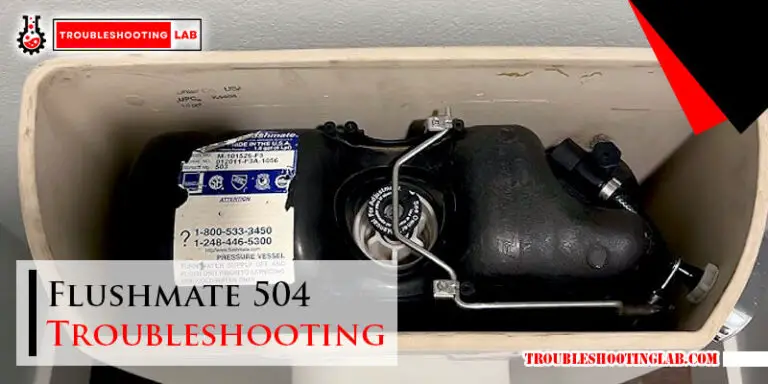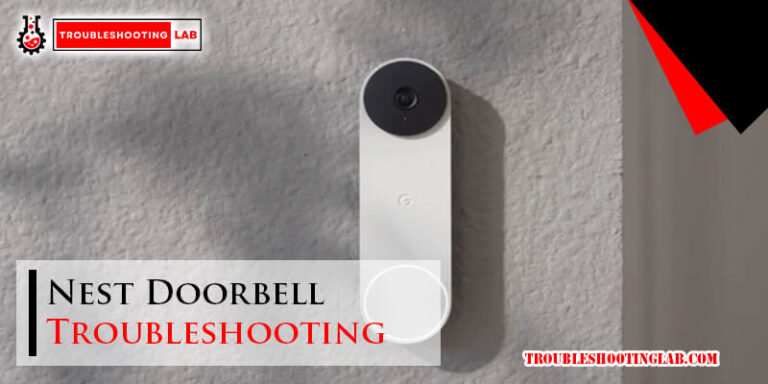Kohler Touchless Faucet Troubleshooting: Quick Fix Guide
Is your Kohler touchless faucet not working as it should? Don’t worry—you’re not alone.
When a faucet that’s supposed to make life easier suddenly stops responding or behaves unpredictably, it can be incredibly frustrating. But here’s the good news: most of these issues are simple to troubleshoot and fix on your own. In this guide, we’ll walk you through practical solutions to common Kohler touchless faucet problems.
Whether it’s an unresponsive sensor, inconsistent water flow, or a faucet that won’t turn off, you’ll find step-by-step answers here. By the end, you’ll feel confident in getting your faucet back to working perfectly—without the stress or a costly call to a plumber. Ready to take back control? Let’s dive in!

Credit: oltsw.com
Common Issues With Kohler Touchless Faucets
Kohler touchless faucets are a modern convenience that simplifies daily tasks, but like any technology, they can have hiccups. You might find yourself frustrated when your faucet doesn’t function as expected. Knowing the common issues can save you time and effort in troubleshooting.
Sensor Not Responding
A non-responsive sensor is a frequent complaint among touchless faucet users. Sometimes the sensor doesn’t detect your hand, leaving you waving under the faucet in vain. This can happen due to dirt or grime buildup on the sensor lens.
To fix this, clean the sensor gently with a soft, damp cloth. Avoid using harsh chemicals that could damage the sensor. If cleaning doesn’t work, check if the batteries need replacement or if the power supply is interrupted.
Low Water Pressure
Low water pressure can make even a simple task like rinsing your hands a hassle. This issue is often caused by a clogged aerator. Minerals in water can accumulate in the aerator, restricting flow.
Unscrew the aerator from the faucet spout and rinse it thoroughly. If mineral buildup persists, soak it in vinegar for an hour before reinstalling. Still experiencing low pressure? Inspect your water supply lines for kinks or blockages.
Faucet Turns On And Off Randomly
A faucet that activates on its own can be downright annoying. This usually happens when the sensor detects unintended movements or reflections. Nearby objects like a shiny sink or countertop can confuse the sensor.
Try adjusting the sensor range according to the manufacturer’s instructions. If that doesn’t work, relocate reflective items or ensure the faucet is installed in a well-lit, non-reflective area. A quick battery check might also resolve the problem.
Battery Drains Quickly
Does it feel like you’re replacing the batteries way too often? Rapid battery drain can occur if the faucet is frequently triggered by unintended movements. Faulty batteries or incorrect installation may also be the culprit.
Switch to high-quality batteries and ensure they are inserted correctly. If the problem persists, inspect the sensor for any defects or consult Kohler’s customer support for further assistance.
Water Leaks From The Faucet
Leaks can occur when seals or washers wear out over time. Sometimes, improper installation or loose connections are to blame. Even a small drip can escalate to a bigger problem if ignored.
Check all connections and tighten them carefully. Replace worn-out washers or seals with Kohler-approved parts. If you’re not comfortable doing this yourself, calling a plumber is your best bet.
Have you faced any of these issues before? Share your experience in the comments and let us know how you resolved them. Troubleshooting doesn’t have to be overwhelming when you know where to start!
Faucet Not Turning On
Few things are more frustrating than a touchless faucet that doesn’t turn on when you need it. Kohler touchless faucets are designed for convenience, but like any device, they can occasionally encounter issues. If your faucet isn’t responding, don’t worry—you’re not alone. Let’s dive into practical troubleshooting steps to get your faucet back in working order.
Battery Replacement Steps
Your faucet may not turn on because the batteries are dead. Here’s how to replace them:
- Locate the battery compartment. In most Kohler models, this is under the sink.
- Open the compartment by sliding or unscrewing the cover. Check for corrosion or leakage.
- Replace the old batteries with fresh ones. Use the recommended battery type—usually AA or AAA.
- Ensure the polarity (+/-) matches the instructions inside the compartment.
- Close the compartment securely and test the faucet.
Did you know weak batteries can cause inconsistent sensor performance? If your faucet has been acting up, fresh batteries might be the simple fix you need.
Sensor Cleaning Tips
Dust, grime, or water spots on the sensor can prevent your faucet from activating. Here’s how to clean it:
- Turn off the faucet’s power to avoid accidental activation.
- Gently wipe the sensor with a soft, damp cloth. Avoid abrasive cleaners.
- If the sensor still looks cloudy, apply a small amount of mild soap to the cloth and clean again.
- Dry the sensor thoroughly with a microfiber cloth to avoid streaks.
- Turn the power back on and test the sensor.
Have you ever noticed how sensors can be finicky in areas with high humidity or frequent splashes? Regular cleaning keeps them responsive.
Power Supply Troubleshooting
Sometimes the issue isn’t the batteries or the sensor—it’s the power supply itself. Here’s what to check:
- Inspect the power cord or battery connection for any loose or damaged wires.
- If your faucet uses an AC adapter, make sure it’s securely plugged into the outlet.
- Test the outlet with another device to confirm it’s working.
- If the power cord looks damaged, consider replacing it with a compatible Kohler part.
- Re-check all connections and test the faucet.
Ever wondered why your faucet might suddenly stop working after a kitchen remodel? Power interruptions during construction could be the culprit.
By tackling these three areas—batteries, sensor cleanliness, and power supply—you can solve most issues with a Kohler touchless faucet not turning on. What’s your go-to fix for tech hiccups around the house? Share your thoughts in the comments below!
Water Flow Problems
Water flow problems can disrupt the functionality of your Kohler touchless faucet. Common issues include low water pressure and uneven flow. These problems often stem from simple issues like clogs or blockages. Understanding how to fix these can save you time and frustration. Below, we’ll cover solutions for common water flow problems.
Low Water Pressure Fixes
Low water pressure can make daily tasks harder. Start by checking the water supply valves under your sink. Ensure they are fully open. A partially closed valve can reduce water flow significantly.
Inspect the faucet’s sensor for dirt or debris. A dirty sensor may cause inconsistent water flow. Clean it gently using a soft cloth. Also, verify the battery level. Weak batteries might affect the faucet’s performance.
If these steps don’t help, check the water lines for kinks. Straighten any bends or twists in the hoses. This can restore normal water pressure quickly.
Clogged Aerator Solutions
A clogged aerator can cause uneven water flow. The aerator is located at the faucet’s spout. It mixes air with water for a smooth flow.
Unscrew the aerator carefully using your hand or pliers. Once removed, inspect it for sediment or mineral buildup. Rinse it under running water to remove debris.
For stubborn clogs, soak the aerator in white vinegar for 15 minutes. Use a soft brush to scrub away any remaining residue. Reattach the aerator tightly, ensuring it’s aligned properly.
These simple steps can resolve most clogged aerator problems, restoring normal water flow.

Credit: www.youtube.com
Unresponsive Motion Sensor
The Kohler touchless faucet is a convenient addition to any kitchen or bathroom. However, an unresponsive motion sensor can be frustrating and disrupt daily tasks. Understanding common issues and how to fix them can save time and effort. Below are practical solutions for resolving an unresponsive motion sensor.
Sensor Alignment Adjustments
The motion sensor may stop working due to misalignment. Check if anything blocks the sensor’s path. Dust, water spots, or grease can interfere with its functionality. Clean the sensor gently with a soft, dry cloth. Ensure the faucet has a clear line of sight to detect motion properly.
Sometimes, the sensor’s position may shift during installation or use. Check the alignment and adjust it if needed. Refer to the user manual for specific guidelines. Testing the faucet after adjustments can confirm if the issue is resolved.
Resetting The Sensor System
Resetting the sensor can often fix performance issues. Start by turning off the water supply to the faucet. Disconnect the power source, whether it’s batteries or an AC adapter. Wait for 30 seconds before reconnecting.
Once reconnected, test the sensor by waving your hand in front of it. This process resets the system and clears any temporary glitches. If the sensor remains unresponsive, check the power source for functionality. Replace batteries or ensure the AC adapter is securely connected.
Water Not Turning Off
Is your Kohler touchless faucet refusing to turn off? This issue can be frustrating, especially when water keeps running without stopping. Understanding the cause is key to resolving the problem quickly. Below, we’ll explore common reasons for this issue and how to troubleshoot effectively.
Diagnosing Sensor Interference
Touchless faucets rely on sensors to detect movement and control water flow. Sensor interference can prevent the faucet from shutting off properly. Check for objects near the sensor that might confuse its detection. Items like soap bottles or towels can obstruct the signal.
Clean the sensor area with a soft cloth to remove dirt or debris. Dirt buildup can block the sensor’s ability to function. Ensure the sensor lens is completely clear for optimal operation. Test the faucet again to see if the water stops as expected.
Valve Control Inspection
The valve control regulates water flow inside the faucet. A faulty or stuck valve can keep water running continuously. Start by turning off the water supply to prevent flooding or damage.
Inspect the valve for visible signs of damage or wear. A loose connection or internal blockage might be causing the issue. Tighten loose connections carefully and remove any debris clogging the valve.
If the problem persists, the valve may need replacement. Contact Kohler’s customer service or a plumbing professional for assistance. Replacing the valve ensures smooth faucet operation and avoids future disruptions.
Intermittent Faucet Operation
Dealing with intermittent operation on your Kohler touchless faucet can be frustrating, especially when you’re in the middle of cooking or cleaning. One moment, it works perfectly; the next, it seems to have a mind of its own. If you’re tired of waving your hand endlessly and wondering why it’s not responding consistently, let’s break it down and get your faucet back on track.
Checking For Loose Connections
Loose connections are one of the most common culprits behind intermittent faucet behavior. Start by inspecting the power source. If you’re using batteries, ensure they are seated snugly in the battery pack.
Next, check the wiring. Look for any disconnected or partially connected wires between the sensor and the control box. Even a slightly loose wire can confuse the system and disrupt operation.
If you’re using an AC adapter, ensure it’s plugged in securely to both the wall outlet and the faucet’s power port. A simple nudge to tighten these connections can often fix the issue.
Software Or Firmware Updates
Did you know your Kohler touchless faucet might need a software or firmware update? It’s true—some models rely on software to manage sensor performance, and outdated versions can cause glitches.
Visit the Kohler website to check if updates are available for your faucet model. Instructions for downloading and installing updates are usually provided step-by-step, and it’s simpler than you might think.
After updating, test your faucet to see if the intermittent operation improves. Think of this as giving your faucet a digital tune-up—it might be all it needs to work flawlessly again.
Have you checked both the connections and the software? If not, give it a try—it might save you a service call. Your faucet is smarter than you think, and these small tweaks can make a big difference!
Dealing With Leaks
One of the most common issues homeowners face with Kohler touchless faucets is leaks. A leaking faucet can be frustrating and waste water, but the good news is that fixing it is often simpler than you might think. Whether the cause is worn seals, loose connections, or something else, you can handle it with a few tools and basic know-how.
Seal And O-ring Replacement
Leaks under the faucet are often caused by damaged seals or O-rings. These small rubber components wear out over time, especially if your water has a lot of minerals. Check your faucet’s user manual to locate the O-rings and seals.
Once you’ve identified the faulty parts, carefully remove them using a flat-head screwdriver or pliers. Take the old seals with you to a hardware store to ensure you buy the exact replacements. Installing the new seals is straightforward—just press them firmly into place, ensuring they sit snugly.
After replacing the seals, test your faucet. Does the leak stop? If not, there could be another issue lurking. Are you confident the seals were installed correctly? Double-check to make sure everything is aligned properly.
Tightening Connections
Loose connections are another common cause of leaks. If water is dripping from where the faucet meets the countertop or under the sink, grab a wrench and inspect the fittings. Start by tightening the nuts and bolts around the faucet base.
Don’t over-tighten, though—excessive force can damage the fittings. Aim for a snug fit that doesn’t strain the components. If the leak persists, consider adding plumber’s tape around the threads for a better seal.
Still leaking? Ask yourself if the connections were fully cleaned before tightening. Mineral buildup or debris can prevent a proper seal. Wipe everything down and retry.
Tackling leaks might seem overwhelming, but each step brings you closer to a solution. What’s stopping you from giving your faucet a quick check? Don’t wait for leaks to worsen—take action now!
Preventive Maintenance Tips
Maintaining your Kohler touchless faucet doesn’t have to be a complicated chore. A little preventive care can go a long way in ensuring your faucet works flawlessly, saving you time and money on repairs. Below are practical tips to keep your faucet in top shape and avoid common issues.
Clean The Sensor Regularly
The touchless feature depends on a clean sensor to work effectively. Dust, grime, and water spots can interfere with the sensor’s performance.
- Use a soft, damp cloth to wipe the sensor area weekly.
- Avoid abrasive cleaners that might scratch the sensor.
- Double-check that the faucet’s sensor light isn’t flickering—it’s a sign of dirt buildup.
Check The Power Source
If your faucet uses batteries, a sudden failure might just mean they’re drained. To prevent interruptions:
- Replace batteries every 6-12 months, even if they seem fine.
- If your faucet is plugged into an outlet, ensure the power cord is secure and free of damage.
Imagine hosting guests and your faucet stops working—checking the power source ahead of time avoids that awkward moment.
Inspect For Leaks
Leaks can develop over time, often unnoticed. A small leak can lead to bigger issues if ignored.
- Run your fingers along the base and hoses weekly to check for moisture.
- Tighten any loose fittings with a wrench but don’t overdo it to avoid stripping the threads.
Have you ever ignored a tiny drip, only to find water pooling under your sink later? Catching leaks early saves you from costly repairs.
Flush The Faucet Periodically
Mineral deposits can build up and restrict water flow. Flushing the faucet helps remove these deposits.
- Turn off the water supply.
- Disconnect the faucet hose and rinse it under running water.
- Reattach the hose and turn the water back on.
Hard water is notorious for leaving deposits. If you live in an area with hard water, make flushing part of your routine.
Use Kohler’s Recommended Cleaning Products
Kohler offers cleaning products specifically designed to protect its finishes and functionality. Using the wrong cleaner could damage your faucet.
- Look for Kohler-approved sprays or solutions online or at your local store.
- Always test new cleaners on a small, hidden area before applying them to the entire faucet.
Would you risk damaging your investment by using a random cleaner? Stick to the recommended options to keep your faucet looking and working like new.
Preventive maintenance isn’t just about avoiding problems; it’s about extending the life of your Kohler touchless faucet. How often do you take a moment to check your faucet? Start today—you’ll thank yourself later.

Credit: oltsw.com
Conclusion
Troubleshooting your Kohler touchless faucet doesn’t have to feel overwhelming. Start by checking the power source and sensor alignment. Clean the sensor and faucet to avoid dirt interference. Replace batteries or parts if needed for consistent performance. Always follow the user manual for guidance.
Regular maintenance can help prevent future issues. A properly working faucet saves time and effort. Stay patient and work step by step for the best results. If problems persist, contacting Kohler support may be the next step. Keep your faucet running smoothly with these simple tips.






